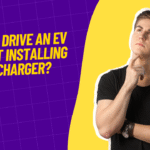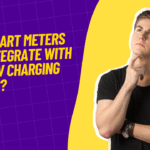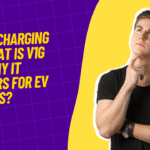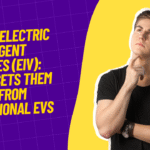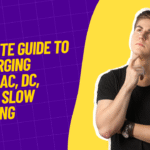Electric vehicles (EVs) are revolutionizing mobility in India and around the world, but one concern remains common among EV users: range anxiety. Whether you’re driving a Tata Nexon EV, MG ZS EV, BYD Atto 3, or any other model, getting the most distance out of every charge matters. Especially in a country where charging infrastructure is still growing, stretching every kilometer without spending a single rupee can make your EV ownership more practical and satisfying.
The good news? You don’t need to install expensive solar panels or upgrade your battery. Just by tweaking your driving style, charging behavior, and daily EV usage habits, you can significantly extend your EV’s range—for free.
This 2025 guide gives you 10 easy, actionable tips to maximize your electric vehicle’s mileage without touching your wallet.
1. Drive Smoothly and Consistently
Why it works:
Sudden acceleration and hard braking waste energy. Smooth and controlled driving uses less battery power and keeps your EV in its most efficient operating zone.
How to do it:
- Accelerate gradually instead of flooring the pedal.
- Maintain a steady speed when possible.
- Anticipate traffic signals and coast rather than braking hard.
2. Make Full Use of Regenerative Braking
Why it works:
Regenerative braking converts kinetic energy back into battery power, helping you recover lost energy during deceleration.
How to do it:
- Use “B Mode” or high regen settings, especially in city traffic.
- Avoid using neutral while slowing down—let regen do the work.
- Learn your car’s regenerative braking behavior and adapt accordingly.
3. Reduce Speed on Highways
Why it works:
High speeds drain EV batteries faster. Aerodynamic drag increases significantly above 80 km/h, which reduces efficiency.
How to do it:
- Stick to 60–80 km/h for best efficiency on highways.
- Use cruise control, if available, to maintain constant speed.
4. Avoid Unnecessary Weight
Why it works:
Extra load means the motor needs more power to move the vehicle, which shortens your range.
How to do it:
- Clear out the trunk or cabin of unnecessary items.
- Remove roof racks if not in use.
- Travel light—every kilogram counts.
5. Keep Your Tires Properly Inflated
Why it works:
Under-inflated tires increase rolling resistance, requiring more energy to move the vehicle.
How to do it:
- Check tire pressure weekly, especially before long drives.
- Inflate tires to the manufacturer’s recommended PSI (usually found on the driver’s side door or in the manual).
6. Limit Use of Air Conditioning and Heaters
Why it works:
Climate control systems are significant energy consumers, especially in small battery EVs.
How to do it:
- Use ventilation or fan-only modes instead of full A/C.
- Pre-cool or pre-heat your cabin while the vehicle is plugged in.
- Use seat warmers instead of cabin heating where possible.
7. Use Eco Mode Whenever Possible
Why it works:
Eco mode adjusts throttle response, limits max power output, and reduces energy consumption from accessories.
How to do it:
- Activate Eco mode for city driving or casual trips.
- Pair Eco mode with regenerative braking for optimal performance.
8. Plan Routes to Avoid Traffic and Elevation
Why it works:
Stop-and-go traffic and uphill drives consume more energy than flat or flowing roads.
How to do it:
- Use apps like Google Maps to select low-traffic routes.
- Avoid hilly areas or steep climbs when you can.
- Try to combine errands into one trip to reduce cold-start energy use.
9. Park Smartly to Preserve Battery Efficiency
Why it works:
Extreme temperatures—both hot and cold—affect battery performance and drain range faster.
How to do it:
- Park in shaded areas during hot days.
- In winter, park in garages or covered spaces.
- Use a windshield shade or insulated car cover when necessary.
10. Keep Your EV Software Updated
Why it works:
Manufacturers often release over-the-air (OTA) updates that optimize battery performance, regen settings, and power usage.
How to do it:
- Connect your EV to Wi-Fi at home for auto-updates.
- Regularly check your EV’s app or system menu for pending updates.
- Visit authorized service centers if OTA updates aren’t supported.
Bonus Tip: Avoid Keeping Your EV at 100% or 0% Charge
While not directly about range per charge, keeping your EV battery between 20% and 80% helps maintain its long-term capacity, which ensures consistent range over the years.
Real-World Results from These Tips
EV users who implement even 5 out of these 10 tips have reported gains of 10–15% more range on average. For an EV that typically runs 300 km per charge, that’s an additional 30–45 km—enough to avoid range anxiety on most city trips.
And the best part? It costs nothing.
EV Range Myths to Avoid
Myth 1: Driving faster helps reach your destination sooner with the same charge.
Truth: Higher speeds dramatically reduce efficiency. Drive steady, not fast.
Myth 2: Regen braking makes regular brakes useless.
Truth: Regen helps, but you still need your brake pads for sudden stops and safety.
Myth 3: Keeping the battery at 100% gives maximum daily benefit.
Truth: It can degrade your battery faster. Stay between 20–80% for best balance.
Frequently Asked Questions (FAQs)
1. Can these tips work on all EV models, including two-wheelers?
Yes. While some tips like regenerative braking may not apply to scooters, smoother driving, tire care, and lightening load apply to all EVs.
2. Will following these tips void my warranty?
Not at all. These tips are based on manufacturer-recommended good practices. They help maintain your battery within optimal operating conditions.
3. How much extra range can I expect?
Depending on your current habits, you can gain anywhere from 10% to 25% more range with consistent practice of these tips.
4. Is Eco Mode safe to use on highways?
Eco mode is safe, but it may limit acceleration and responsiveness. It’s better suited for city driving, though it can be used on highways if you maintain moderate speeds.
5. Do I need any apps to track my range improvements?
Many EVs come with built-in driving analytics or companion apps. You can also manually track range-per-charge across a few cycles to see improvements.
Recap: 10 Free EV Range Boosters
| Tip Number | Strategy |
|---|---|
| 1 | Drive smoothly and consistently |
| 2 | Use regenerative braking effectively |
| 3 | Reduce highway speeds |
| 4 | Remove unnecessary weight |
| 5 | Maintain correct tire pressure |
| 6 | Limit A/C and heater use |
| 7 | Activate Eco mode |
| 8 | Plan efficient routes |
| 9 | Park to avoid extreme heat/cold |
| 10 | Keep your EV’s software updated |
Final Thoughts
Increasing your EV’s range doesn’t always require bigger batteries or fancy tech. Sometimes, all it takes is a bit of awareness, habit change, and planning. In a time when electricity costs are rising and charging stations are still catching up, getting the most out of every single charge can make your EV feel smarter, more economical, and more sustainable.
These 10 tips are practical, proven, and most importantly, completely free. Adopt them today, and enjoy longer drives, fewer charging stops, and less stress behind the wheel.


